The moment the Concorde dream came to an end
As passengers took to their seats, the excitement was palpable, with the air of wonder that every passenger experienced as they boarded the snug cabin of Concorde for the first time.
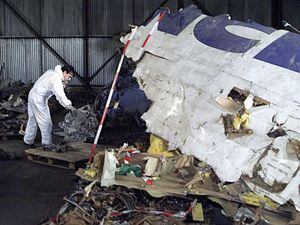
Some were rich and famous, others just ordinary people who had saved for the trip of a lifetime. But no matter who you were, a flight on Concorde was always a special occasion.
As the plane taxied towards the runway, the level of anticipation would have reached fever pitch, as those on board waited for the shove in the back as the world's only supersonic airliner took to the skies. And seconds later, they were all dead.
Twenty years tomorrow, the Air France Concorde flight 4590, crashed within two minutes of take-off, claiming the lives of all 100 passengers, nine crew members, and four people in the hotel also destroyed in the crash. The disaster also came close to taking the life of French President Jacques Chirac, and marked the beginning of the end for supersonic transatlantic passenger travel. And all caused by a piece of metal slimmer than a penny.
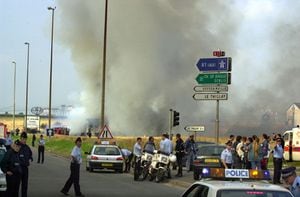
Absent from the flight was Guenter Pfitzmann. The German film star had booked a ticket, but was forced to cancel at the last minute after suffering a cardiac arrest, making one of a very small group of people who could say their life had been saved by a serious heart condition.
Another 33 German passengers booked on the same luxury cruise to the Caribbean escaped death. Because of limited seating on Concorde, they were sent to New York on an earlier flight.
Flight 4590 was in trouble before it had even left the ground. Air traffic controller Gilles Logelin watched in horror as the plane's wing burst into flames as it picked up speed on the runway.To make matters worse, the burning plane was heading towards a Boeing 747 at the end of the runway carrying President Chirac.
Logelin immediately radioed through to the captain and co-pilot, but there was nothing they could do. Captain Christian Marty had already passed the point of no return, where there was not enough runway left to abort safely, so all he could do was push the throttle forward and hope for the best.
He managed to get the plane into the air, avoiding the president's plane, but Logelin watched in horror as moments later the smouldering jet dipped out of sight, followed by a plume of black smoke rising on the horizon.
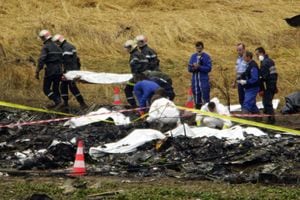
Frederic Savary, 21, was driving along a nearby motorway when he noticed the plane dip.
"It passed 90ft over us," he said. "The whole back end was on fire. We saw it start to turn. All of a sudden everything was black and we stopped immediately and called the firefighters."
The plane was heading to New York, and most of those on board were German holidaymakers who were due to join the cruise ship MS Deutschland to Ecuador via Cuba and the Bahamas.
Witnesses on the ground heard two deafening explosions before the Concorde ploughed into the Hotelissimo hotel and restaurant complex at Gonesse, 10 miles north-east of Paris, and on into a cornfield. Thankfully, there were only five people in the hotel at the time, and only one of them survived.
Darren Atkins, a British businessman on board a plane waiting to take off, said aircraft's left-hand-side engines were on fire before it left the ground, and that debris was already falling off.
"It was already smoking as the plane accelerated down the runway," he said.
"As the aircraft drew level with us, the left-hand engines were burning very heavily. On the tarmac was some debris that had fallen off the engine. It was still on fire after the aircraft had departed."
Among those who perished was German football manager Rudi Fassnacht, advertising tycoon Friedrich Werth, 62, and multi-millionaire Andreas Schranner. Prominent trade-union leader Christian Goetz, 60, and his society photographer wife, Irene Vogt-Goetz, had booked the trip to celebrate their double-remission from cancer.
But it was not just the movers and shakers who were on board. Retired postmistress Doris Madry, 68, who was travelling with husband Rolf, 64, was said to have spent several years scrimping and saving to pay for the trip. Klaus and Margaret Frentzen were schoolteachers in their mid-30s. They had saved for years for the honeymoon they could not afford when they got married. A colleague said it had been long Klaus's dream to fly with Concorde.
“He loved that plane, loved it to death.”
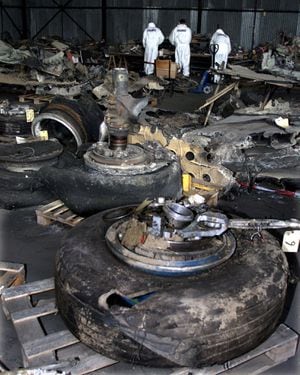
It was the first and only fatal incident involving Concorde, but it sent shockwaves across the aviation industry. British Airways immediately cancelled two Concorde flights to New York, and the French ministry of transport grounded its five remaining Concordes.
BA said that it had "complete confidence" in the planes, but had taken them out of action until more was known about the cause of the crash.
The day before the crash, it was reported that British Airways had grounded one of its own Concordes after a three-inch crack had been found in its wing. Smaller cracks had also been found in BA's other six Concordes, but the Civil Aviation Authority had passed them as safe to fly.
This was quickly ruled out as a cause of the crash, and Air France's managing director Jean-Cyril Spinetta said the most likely cause was engine failure, a view confirmed by aviation experts.
Witnesses in Gonesse also described seeing flames spurting from one the planes two left-side engines, and felt the vibrations of the jets as the pilot struggled to gain height. Some said the pilot appeared to be trying to turn back when the Concorde dropped out of the sky. An airport worker said: "It tried to do a half turn and fell to earth just as it was starting the manoeuvre."
But the investigation which followed revealed it was not the engines that caught fire, but a fuel tank in the wing. And when the investigation team inspected the runway, the true cause of the crash was discovered – a small jagged piece of metal, 16in long and 1/18 of an inch thick, which had punctured the plane's tyre.
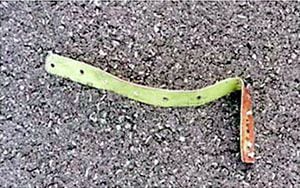
"That lump of rubber parted company with the tyre more or less with the velocity of a missile," said Concorde pilot John Hutchinson. "And it went absolutely slamming up into the underside of the wing by tank number five, and it set up a shock wave in the fuel tank."
This caused the tank to burst, and either the heat from the engines or a spark from the landing gear set fire to the fuel, which melted the wing as the pilots tried to keep control.
But Captain Marty was also found to have made several fatal errors. The plane was carrying more fuel and baggage than it should have been, meaning that it took off at half the speed it was supposed to have done. And immediately after take-off, the flight engineer shut down one of the jet's engines he mistakenly thought was causing the fire.
If the crew had followed normal procedure and run a fire drill, they might have had more time to turn back around or navigate to another airport for an emergency landing.
But shutting the engine down unnecessarily sealed the fate of the flight, as the plane's speed dropped due to lack of power. The imbalance caused by shutting down the engine also caused the plane to roll over.
With the speed falling and the wing disintegrating, the plane had no chance, and simply fell from the sky.
Concorde flights did resume for a while, but demand fell considerably after the fire and the plane was no longer viable. While Continental Airlines was held criminally responsible for the crash, the piece of metal having fallen from one of its planes, it was the BA and Air France Concorde that were hit by the fall in passenger confidence. The last Concorde flight took place on October 24, 2003.





